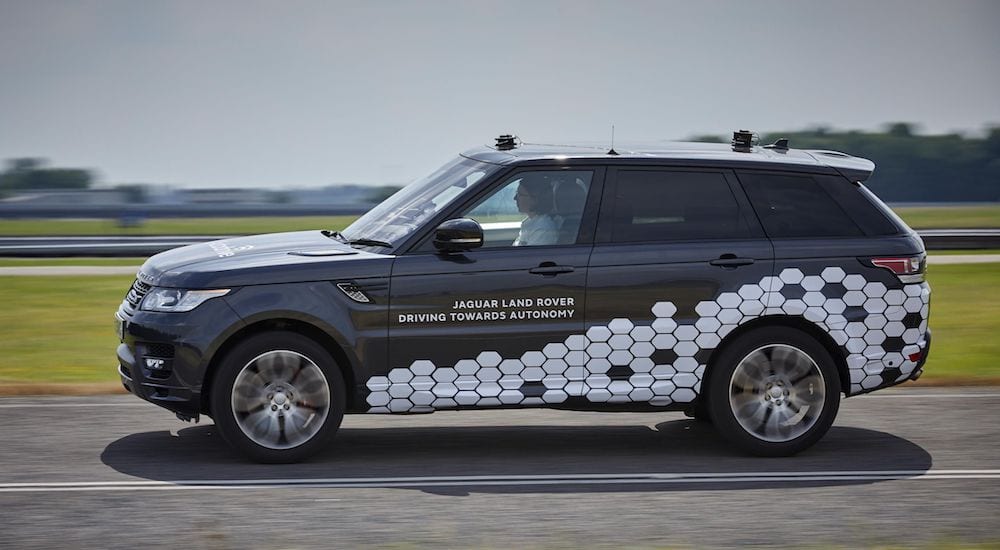With autonomous driving representing the next quantum leap in automotive technologies, it’s easy to appreciate why it’s the subject of so many headlines on a daily basis. From discussion of visionary collaborations and their aggressive timelines for integration, to the more somber side of things in the form of injuries and fatalities caused by failed testing, no-one can claim surprise that such technologies are well on their way to realization. But, in large, our anticipation is mixed with trepidation as we approach this paradigm shift in how we get from point A to point B.
With most drivers yet to be sold on the idea of autonomy, automakers have their work cut out for them as they race around this first lap of cultural acceptance. The challenge comes in determining which steps they must take to assure drivers that such technology is safe. And with that goal in mind, it’s hard to argue that Jaguar Land Rover has taken one of the more inventive, if not surprising approaches. An approach that leads through the disconcerting unknown of the ‘uncanny valley’.
For those unfamiliar with the term, the ‘uncanny valley’ describes the common and unsettling feeling that people may experience when robotic creations incorporate human elements, albeit ones that are not passable as human / convincingly realistic. It speaks to our hardwired (and very human) distrust of anything that challenges our definition of what it means to be alive.
Recent advances in robotic technology, for example, have yielded automatons of incredible strength, agility and dexterity. You might have seen videos of such creations in your social media newsfeeds, depicting biped robots capable of running, flipping, opening doors and lifting immense weights. And while such technology is bound to generate fearfulness of a robot revolution against mankind, it comes nowhere near the discomfort we experience when artificial intelligence is combined with a simulation of humanity. By this we mean robotic creations given the appearance of a human. Sporting a simulated flesh, these creations are programmed to simulate facial expressions, eye movement and even signs of personality in order to express themselves.
That said, Jaguar Land Rover seems ready to challenge us out of our comfort zone with their newest autonomous prototype: a vehicle with cartoon-like simulations of human eyes as part of its front fascia. While this might sound like a joke, the intention is create a form of short-hand communication, by programming vehicles to make ‘eye contact’ with pedestrians. This will allow the vehicles to acknowledge the pedestrian, and communicate that they will remain still, allowing them to cross the road safely.
“It’s second-nature to glance at the driver of the approaching vehicle before stepping in the road,” explains Pete Bennett, research manager at Jaguar Land Rover’s Future Mobility division. “Understand how this translates in tomorrow’s more automated world is important.”
“We want to know if it is beneficial to provide humans with information about a vehicle’s intentions or whether simply letting a pedestrian know it has been recognized is enough to improve confidence.”
According to the American Automobile Association, two-thirds of people interviewed said they’d feel less comfortable walking, or cycling on roadways shared with autonomous vehicles. With this in mind, Jaguar Land Rover is working with clinical psychologists to overcome the psychological barrier, in the hopes of improving human confidence.
But are these (quote) Eye-Pods the best possible solution. On one hand, there is an unnerving creepiness about a 2,000 lb reject from Disney’s CARS franchise with eyes, silently signaling you to walk in front of it. On the other hand, the intention is a noble one, as the automaker aims to evolve existing methods of safety-centric communication.
With over 500 test runs of the technology it appears as thought Jaguar Land Rover plans to proceed with their research and development. Time will tell if this is merely a stepping stone in the creation of trust, or a long-term solution. But either way, it seems clear that humanity will soon be prompted to cross the uncanny valley, or be driven over.
This has been AutoInfluence. Thanks for listening.




